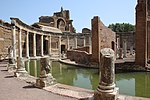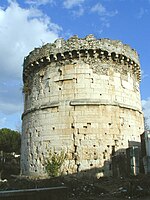Tivoli Cathedral
1650 establishments in Italy1650 establishments in the Papal States17th-century Roman Catholic church buildings in ItalyCathedrals in LazioChurches in the metropolitan city of Rome ... and 3 more
Roman Catholic cathedrals in ItalyRoman Catholic churches completed in 1650Tivoli, Lazio

Tivoli Cathedral (Italian: Duomo di Tivoli or Basilica Cattedrale di San Lorenzo Martire) is a Roman Catholic cathedral, dedicated to Saint Lawrence, in Tivoli, Lazio, Italy. It is the seat of the bishop of Tivoli.
Excerpt from the Wikipedia article Tivoli Cathedral (License: CC BY-SA 3.0, Authors, Images).Tivoli Cathedral
Piazza dei Duomo,
Geographical coordinates (GPS) Address Nearby Places Show on map
Geographical coordinates (GPS)
| Latitude | Longitude |
|---|---|
| N 41.965555555556 ° | E 12.796666666667 ° |
Address
Piazza dei Duomo
Piazza dei Duomo
00019
Lazio, Italy
Open on Google Maps









